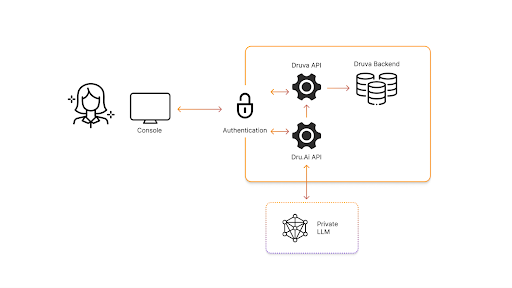Welcome to a behind-the-scenes look at the technology behind Dru, our newest GenAI team member! In this interview with our VP of Product, David Gildea, we dive into the journey and motivation behind developing our own GenAI capabilities, the technology (and why we chose it) that ensures its security, how we solved and learned from technical challenges during its development, and so much more.
Why did Druva decide to make its own GenAI capabilities?
We built our own GenAI capabilities to help get the very best from Generative AI and offer it to our customers. LLMs and Generative AI offer a lot, but part of their downfall is that they are very general and designed to meet the needs of every use case to a certain extent. In our case, we needed to meet the specific use cases of our customers to the best possible extent.
Technically, how did Druva go about developing these GenAI capabilities?
One word jumps out here, and that is experimentation. We experimented repeatedly with different LLMs, approaches, solutions, and capabilities to get to where we are today. This involved looking at a wide range of LLMs, like those from Anthropic, AWS, A21, OpenAI, Meta, and HuggingFace — then testing how they compared to each other to solve the various problems our customers face.
We have settled on a few for now, but this is always likely to change as our requirements and the capabilities of these LLMs will also change. One of the early considerations that we started to evaluate was how to think about the capabilities of LLMs. We divided these into three areas and prioritized them. These areas are accuracy, latency, and cost. For us, the accuracy of the LLM was the most important factor, followed by the latency of the responses of the LLM and, finally, the cost.
How do you ensure user security?
We prioritized customer security and privacy within the architecture. The AI’s focus is on enhancing customer interactions, not on analyzing or using customer data as part of the learning process. All LLMs are securely hosted separately and respond exclusively through Druva’s existing APIs, respecting your controls and permissions.
The diagram below shows the security and privacy controls we have in place within the architecture, demonstrating that:



